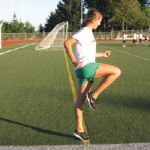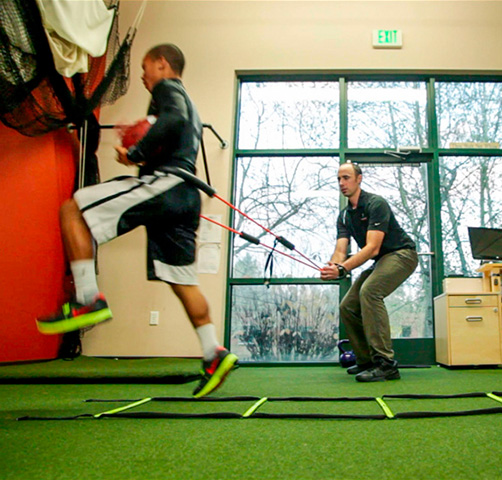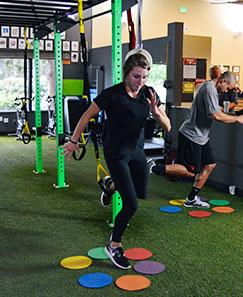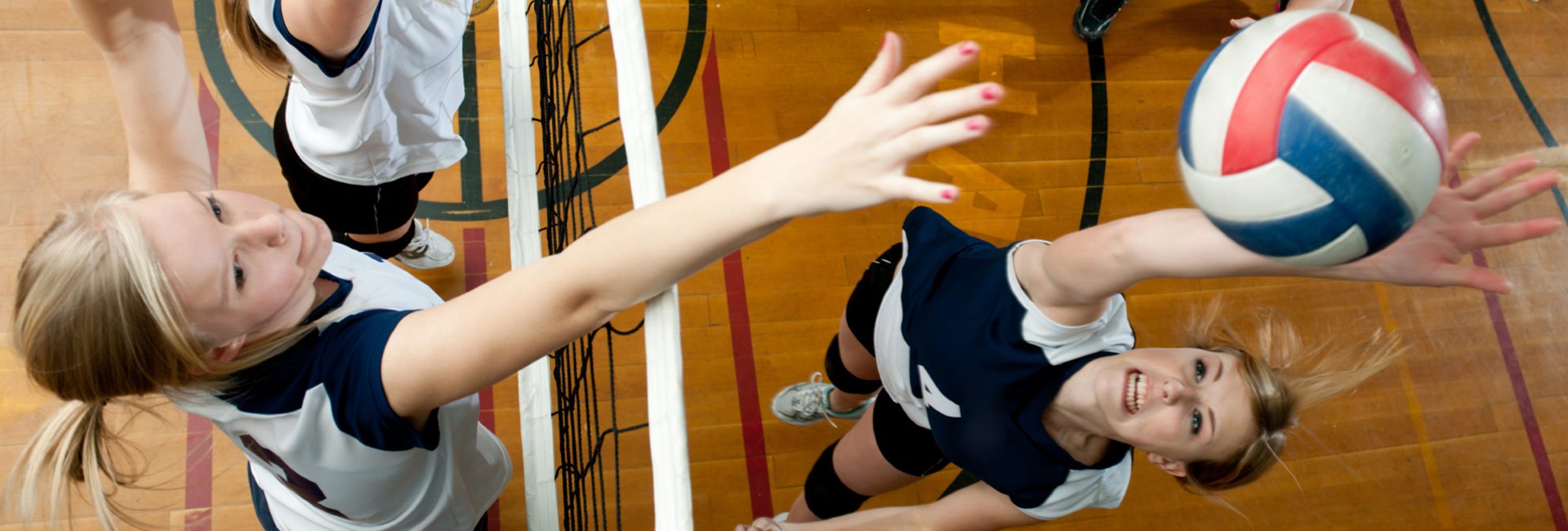Dynamic stretching is becoming more commonplace in professional and collegiate athletics, and a trickle-down has been seen in high school and youth athletics as well. It is based on the repetitive completion of whole-body movement patterns in order to increase blood flow to the muscles. This aids in raising core and muscle temperature, creating improved flexibility and decreased risk of injury. These repetitive movements aid in warming up not only the muscles but the nervous system as well, allowing the nerves to fire more efficiently and improving the recruitment of your muscles for balance and stability. In volleyball, dynamic stretches are the ideal warm-up exercises for preparing the muscles for the high intensity of movement utilized during play and for avoiding injury. Consider the following for your next volleyball warm-ups.
General Dynamic Warm Up

Lateral High Knees
Walking Lunges


Skip with Arm Swing / A Skip
Lateral Shuffle


Explosion Runs
Scissor Jumps
On single whistle, athletes jog toward baseline. On double whistle, athletes explode into full sprint. On single whistle, athletes go back to jog. Continue this sequence until they return to baseline starting place.
Complete 2 repetitions
On command, athletes will lunge forward with his or her right leg. The athlete will then jump off the leg while propelling the left leg forward. The athlete should land in a lunge with the left foot forward. This is one repetition.
Complete 10 repetitions each
Vertical Jumps
Bounding
Athletes will stand with feet shoulder width apart with a slight bend in the knees. On command, the athletes will jump as high as possible and land with a soft landing.
Complete 10 jumps
On command, athletes will bound to reference point and back to starting point. Maintain tight core, knee up/toes up, body control with proper arm mechanics.
Complete 2 repetitions
Carioca with Hip Drive
Back Jog
On command, athletes will carioca to reference point, and, facing in the same direction, carioca back to the starting point. This is similar to the carioca, except athletes perform a lateral high knee, driving the forward leg up and over. Regular carioca can be used until proper technique is demonstrated.
Complete 1 repetition
On command, athletes will run backwards to reference point and run backwards to the starting point. Emphasis is placed on reaching back with lead foot and completing a proper run gait.
Complete 1 repetition
Experts in Sports Injury Recovery
We are committed to providing effective, efficient, and compassionate care to help you return to pain-free sport. Our passion is to help every patient reach their goals on their journey to recovery and optimal performance.


